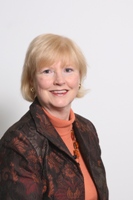| Executive Director's Blog | ||

Linda Danter, Ph.D.
|
Nov 22, 2010 Why Women of Retirement Age Aren’t RetiringNew Directions Career Center exists to empower women to become self-sufficient. When the Center was founded in 1980 it was to help displaced homemakers enter or re-enter the workforce. These women had usually been displaced by divorce or death of a spouse, were between the ages of 20 and 40, and had minor children living at home. The structure of our society has changed considerably in the last 30 years. Today our typical client is over the age of 40, with many in their 50s and a growing number in their 60s, 70s, and even in their 80s! Why are women continuing to work past the age previously considered “retirement” age? Several factors are driving this trend. More women are bearing children later in life, so many of these women still have minor children at home. In addition, a growing number of women over the age of 50 are raising their grandchildren! If these women are single OR if the spouse works at a low paying job or is disabled, they may need to work to not only support themselves but minor children. Today women (as a group) earn 73 cents to the $1.00 earned by men. The earning disparity was even greater when “seasoned” women started their careers. Many women take time off to deliver and raise children. These factors result in women not having retirement plans equal to those of men. Obviously, the economy has taken its toll on retirement plans of both men and women, and many of us may be working longer than we originally intended. Still, there are other factors at play when it comes to older women. The Sloan Center at Boston College took an in-depth look at the reasons older women remain in or return to the work force. The results of their analysis concluded the following: Older women in the workforce are poorer According to Boston College research, women were increasingly under-employed compared to men as they aged. In their 20s, underemployment rates were fairly equalized between men and women. By their 50s, the difference of underemployment rates between men and women was nearly 5 percent. According to the Department of Labor, the median weekly earnings for women in 2009 were 20 percent less than the median weekly earnings for men. Marriage and older working women In the 1970s, the majority of working women over the age of 65 were single, widowed, or divorced. That number has shifted; by 2007, more than half the women over the age of 65 in the workforce were married. In many cases, these women are supporting an ill or disabled spouse. The double minority effect Older women of color have higher unemployment rates than Caucasian women. Hardest hit were women of color living outside of larger metropolitan areas. According to the department of labor, the unemployment rate for all women in 2009 was 8.1 percent. For black women, that rate jumped to 12.4 percent. How NDCC Helps In many cases, the women who seek out the services of New Directions Career Center have no choice but to work. These women either lost their spouse or never married, and simply must work to survive. New Directions Career Center assists older women in finding careers that capitalize on their experience, taps into their passions, and provides them with a livable wage. If you are a woman over the age of 50 in need of the skills and resources that will allow you to obtain a job and become self-sufficient, contact New Directions Career Center for more information about how we can help.
|
|
| Executive Director's Blog | ||

|
|
|
















No comments:
Post a Comment